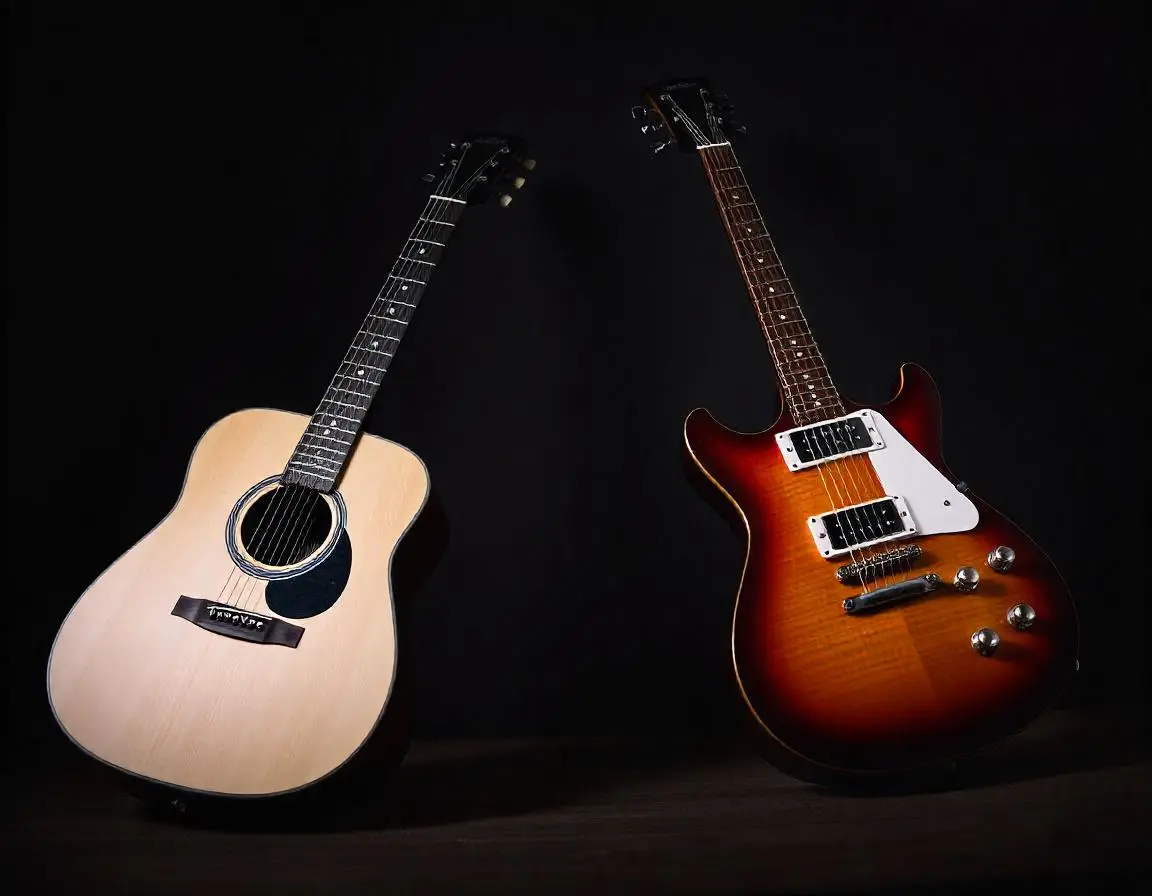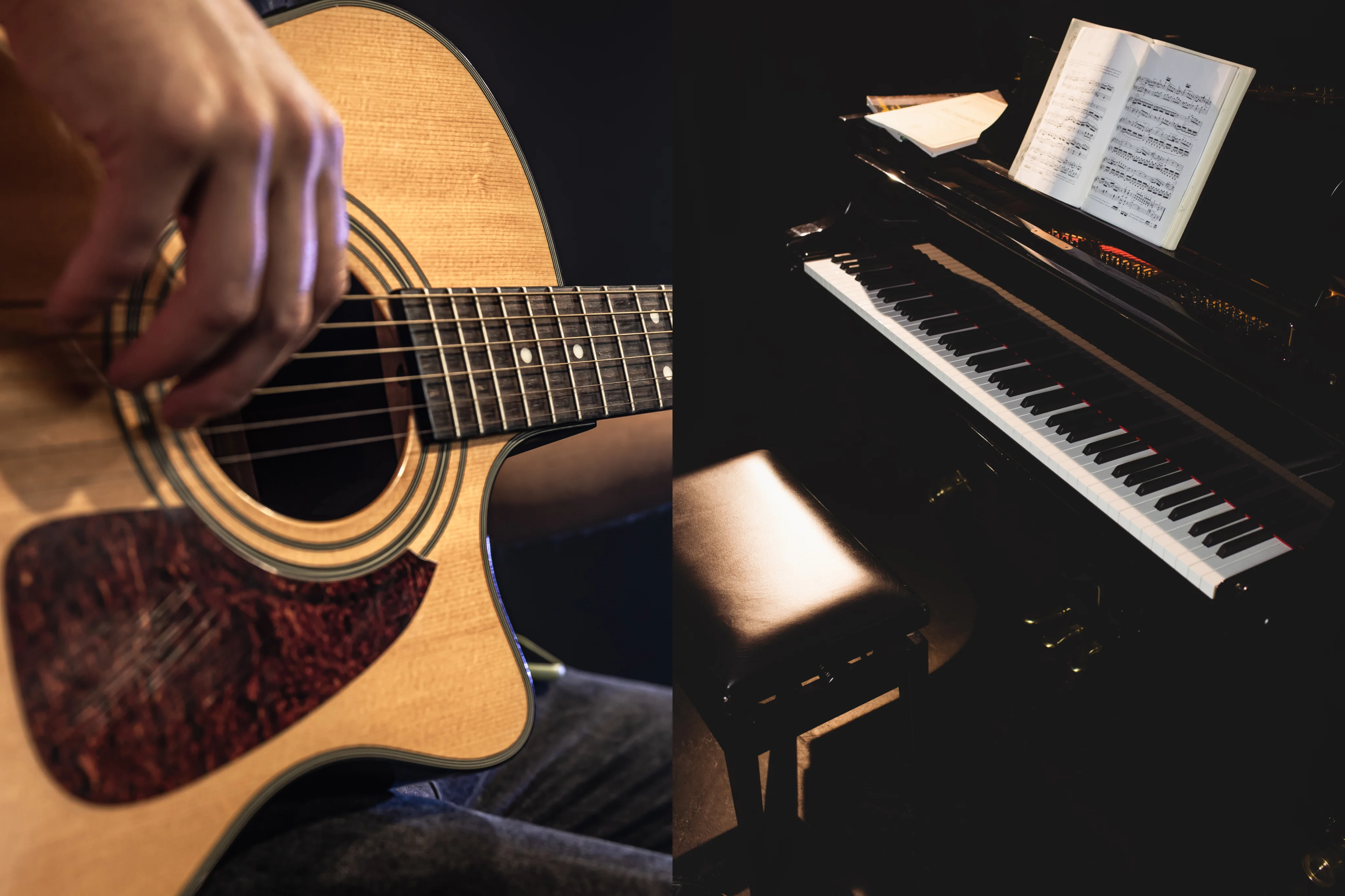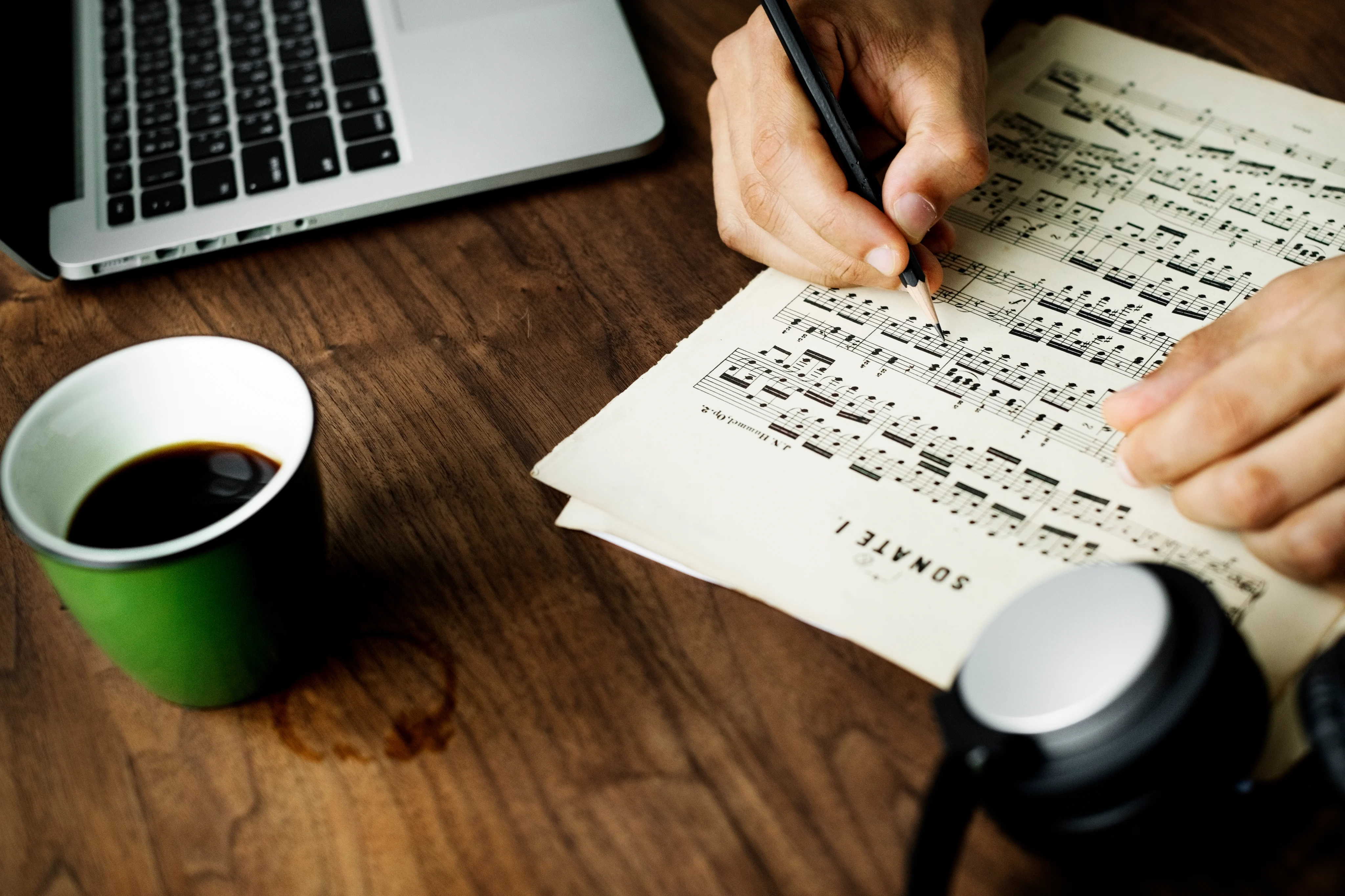How to Read a Piano Sheet?
This is the first question that pops up in the minds of any aspiring pianist. Like any other language, even music is a language. You need to read and write music to communicate with other musicians. Reading and writing music unlocks a world of possibilities, including the ability to jam with other musicians. Come, let’s dive right into it and understand the basics of piano sheet music for beginners.
The Basics of Piano Sheet Music
Just as alphabets, vowels, and consonants are important in a language, staff, clefs and measures are an important part of knowing how to read a piano sheet. The most important component is staff. It consists of five horizontal lines and four spaces where the notes are positioned. Every note on the staff represents a pitch that indicates if it has a higher or lower sound.
Clefs are placed at the start and indicate the pitch range and there are two main clefs in piano music. First, the treble or G clef, used to play higher notes, and second, the bass or F clef, used to play lower notes. The treble clef is played with the right hand and the bass clef with the left. The other component is Measures, which consists of a set number of beats that help in organising the rhythm in the music. Measures split the staff into sections with vertical lines called Barlines.
Also Read: Understanding Piano Sheet Music: A Beginner’s Guide
Understanding Piano Music Note Values As a Beginner
When learning piano, understanding its musical alphabet is very important. The note values determine the duration of a note while playing a piece of music. This directly impacts the rhythm and timing.
- Whole Notes (𝅝) – They have the longest duration. It’s like holding a note and letting it play an entire measure.
- Half Notes (𝅗𝅥) – As the name suggests, will be played but only for half the duration of a whole note. They are usually held for two beats, filling half of a measure.
- Quarter Notes (𝅘𝅥) – Give the rhythm a steady and even pulse. It usually lasts for one beat.
- Eighth Notes (𝅘𝅥𝅮) and Sixteenth Notes (𝅘𝅥𝅯) – These add complexity and speed to the rhythm. They have a shorter duration and only last for ½ a beat and ¼ of a beat.
To simplify, imagine a measure of 4/4 time. A whole note will take up the entire measure, half note will take half the measure, quarter notes will take one beat, eighth notes will take ½ a beat and sixteenth notes will take ¼ of a beat. These notes will help you play the right rhythm and ensure your music flows as intended. For more information on how to read piano music sheet, read our blog on Piano Music Notes for Beginners.
Time Signatures and Key Signatures
Another key element in the piano sheet music for beginners is time and key signatures. These signatures will guide you on how to play a piece efficiently.
Time signatures consist of two numbers arranged vertically. The top number shows the number of beats per measure, and the bottom number indicates which note value represents one beat. E.g., – In a 4/4 time signature, there will be four beats/measures, with every beat being a quarter note.
Key signatures help in creating harmonious sounds and are placed right after the time signature. They represent the key of the piece that you’ll be playing and help in identifying the flat or sharp notes. E.g. a one sharp (F#) key signature falls under the key of G major or E minor.
Reading Piano Music Notes
The treble and bass clefs are the two key elements to read a piano music sheet. The treble represents a higher note, while the bass clef represents the lower notes. As for the staff, you’ll find five lines and four spaces, representing a specific pitch. E.g., for treble clef, the lines spell E, G, B, D, F; and the spaces, F, A, C, E. For bass clef, the lines are E, G, B, D, F; and the spaces A, C, E, G. To improve your piano sheet music skills, learn these positions and try identifying them on both the staff and keyboard. Use flashcards or apps like Artium Academy to help you with identifying these landmark notes. Remember, consistent and regular practice will improve your overall piano proficiency.
Dynamics and Expression Marks
As a beginner reading piano music sheets, it’s essential to include dynamics and expression marks. Dynamics is associated with loudness or softness. Forte (f) in dynamics indicates loud, while piano (p) indicates soft. The other terms to remember are crescendo, which means to gradually get louder, and decrescendo, which means getting softer.
Expression marks in music tell you how to play the notes. Staccato notes should be short and choppy, while legato notes should be played smoothly, connecting one note to the next. Knowing this makes your music sound more interesting and full of feeling.
Practice Tips for Beginners
To effectively practise reading piano sheet music as a beginner, the first step is to start practising simple pieces that meet your skill level. This will help you build confidence and familiarity with the notes. Like every other thing, while learning piano, break down the music into smaller pieces. This allows you to focus on one part at a time. Also, use cards, apps or other learning aids to learn note recognition and rhythmic patterns. At Artium Academy, our online music classes have been helping piano aspirants around the world to realise their dreams. With built-in interactive tools, personalised feedback and expert guidance, we have been helping pianists to learn piano efficiently and stay motivated. In the end, consistency is the key. So, ensure you practise regularly and be patient. Remember, learning new things takes time and persistence.
Conclusion
Learning piano is fun; all you need to do is have the willingness to learn and practise regularly. The only way to get better at playing the piano is to patiently practise and let your skills develop. At Artium Academy, our Online music classes allow you to explore your inner musician with our top-notch curriculum.
To begin your piano learning journey Book A Free Trial Now!















